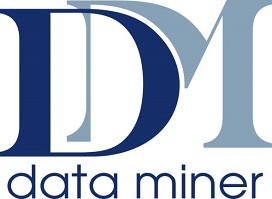Overview
This course is targeted to those looking to familiarize themselves with the fundamentals of security, compliance, and identity (SCI) across cloud-based and related Microsoft services.
This is a broad audience that may include business stakeholders, new or existing IT professionals, or students who have an interest in Microsoft security, compliance, and identity solutions.
Candidates should be familiar with Microsoft Azure and Microsoft 365 and want to understand how Microsoft security, compliance, and identity solutions can span across these solution areas to provide a holistic and end-to-end solution.
Part of the requirements for: Microsoft Certified: Security, Compliance, and Identity Fundamentals
Prerequisites
Candidates should be familiar with Microsoft Azure and Microsoft 365.
Outline
Describe the Concepts of Security, Compliance, and Identity
Describe security methodologies
- describe the Zero-Trust methodology
- describe the shared responsibility model
- define defense in depth
Describe security concepts
- describe common threats
- describe encryption
Describe Microsoft Security and compliance principles
- describe Microsoft’s privacy principles
- describe the offerings of the service trust portal
Describe the capabilities of Microsoft Identity and Access Management Solutions
Define identity principles/concepts
- define identity as the primary security perimeter
- define authentication
- define authorization
- describe what identity providers are
- describe what Active Directory is
- describe the concept of Federated services
- define common Identity Attacks
Describe the basic identity services and identity types of Azure AD
- describe what Azure Active Directory is
- describe Azure AD identities (users, devices, groups, service principals/applications)
- describe what hybrid identity is
- describe the different external identity types (Guest Users)
Describe the authentication capabilities of Azure AD
- describe the different authentication methods
- describe self-service password reset
- describe password protection and management capabilities
- describe Multi-factor Authentication
- describe Windows Hello for Business
Describe access management capabilities of Azure AD
- describe what conditional access is
- describe uses and benefits of conditional access
- describe the benefits of Azure AD roles
Describe the identity protection & governance capabilities of Azure AD
- describe what identity governance is
- describe what entitlement management and access reviews is
- describe the capabilities of PIM
- describe Azure AD Identity ProtectionDescribe the capabilities of Microsoft Security Solutions
Describe basic security capabilities in Azure
- describe Azure Network Security groups
- describe Azure DDoS protection
- describe what Azure Firewall is
- describe what Azure Bastion is
- describe what Web Application Firewall is
- describe ways Azure encrypts data
Describe security management capabilities of Azure
- describe the Azure Security center
- describe Azure Secure score
- describe the benefit and use cases of Azure Defender – previously the cloud workload protection platform (CWPP)
- describe Cloud security posture management (CSPM)
- describe security baselines for Azure
Describe security capabilities of Azure Sentinel
- define the concepts of SIEM, SOAR, XDR
- describe the role and value of Azure Sentinel to provide integrated threat protection
Describe threat protection with Microsoft 365 Defender (formerly Microsoft Threat Protection)
- describe Microsoft 365 Defender services
- describe Microsoft Defender for Identity (formerly Azure ATP)
- describe Microsoft Defender for Office 365 (formerly Office 365 ATP)
- describe Microsoft Defender for Endpoint (formerly Microsoft Defender ATP)
- describe Microsoft Cloud App Security
Describe security management capabilities of Microsoft 365
- describe the Microsoft 365 Security Center
- describe how to use Microsoft Secure Score
- describe security reports and dashboards
- describe incidents and incident management capabilities
Describe endpoint security with Microsoft Intune
- describe what Intune isdescribe endpoint security with Intune
- describe the endpoint security with the Microsoft Endpoint Manager admin center
Describe the Capabilities of Microsoft Compliance Solutions
Describe the compliance management capabilities in Microsoft
- describe the compliance center
- describe compliance manager
- describe use and benefits of compliance score
Describe information protection and governance capabilities of Microsoft 365
- describe data classification capabilities
- describe the value of content and activity explorer
- describe sensitivity labels
- describe Retention Polices and Retention Labels
- describe Records Management
- describe Data Loss Prevention
Describe insider risk capabilities in Microsoft 365
- describe Insider risk management solution
- describe communication compliance
- describe information barriers
- describe privileged access management
- describe customer lockbox
Describe the eDiscovery capabilities of Microsoft 365
- describe the purpose of eDiscovery
- describe the capabilities of the content search tool
- describe the core eDiscovery workflow
- describe the advanced eDisovery workflow
Describe the audit capabilities in Microsoft 365
- describe the core audit capabilities of M365
- describe purpose and value of Advanced Auditing
Describe resource governance capabilities in Azure
describe the use of Azure Resource locks
describe what Azure Blueprints isdefine Azure Policy and describe its use cases
describe cloud adoption framework
Please note that whilst this course is aligned to the equivalent Microsoft Exam it may not contain all information required to pass the exam. As per Microsoft guidance, further self study and hands on experience is recommended in addition to attendance of this course.

